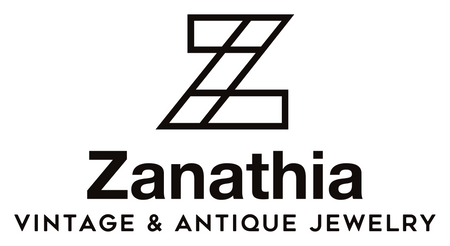
History books have often excluded just how prevalent the Black Victorian presence was in Britain and America. Of course, documented information and images showcase African descendants, but disparity and suffering have always been associated with those of the African diaspora. Yet, another portrayal of the Black Victorian involves dignity, poise, elegance, and triumph stories in emerging Middle-Class societies. The antique market has many tintypes and cabinet cards that showcase Black Victorians dressed in elegant quality garments, many smiling with pride and dignity in their eyes. Many of these portraits were also used for stickpin accessories, a sentimental gesture to honor a dearly departed loved one's memory.

While I've seen lovely examples of mourning stickpins that feature Black Victorians, I have yet to find an example of hair work jewelry recorded as belonging to an African descendant. However, that does not indicate the items are not presently preserved. Many of these essential accessories may be hidden in a treasured family heirloom collection or ambiguously preserved without public knowledge of their African heritage. The question is not whether Black Victorians practiced some of the same sentimental 19th-century trends as their white counterparts, but where are these significant collectibles? Why they are not emphasized or acknowledged as much as other antiques is an important question.

Recently, there has been a rise and heightened interest in Black Victorian portraits. In today's antique market, a daguerreotype of an unidentified Black Victorian is deemed rarer and may sell for thousands of dollars. It is a common misconception that Black Victorians did not routinely sit for portraits, but this is far from the truth. Several photography studios catered to Black Victorians, including black-owned studio photographer Augustus Washington (1820-1875). The details of many studio portraits are very captivating and intriguing. Hand beaded embroidery on Victorian dresses, Jet brooches and earrings, scarf pins, and gold-tinted accessories were routinely worn by Black Victorians. When examining these pieces, one can conclude that many of these lovely pieces were likely preserved. Why? Who is to say that quality 19th-century brooches, necklaces, and sweetheart bracelets in present-day collections did not once belong to a Black Victorian? While many of these accessories were passed down from generation to generation in heirloom collections, there are also many antiques with an unknown past or providence. Therefore, the possibility is endless and diverse when collecting and curating Victorian jewelry pieces.

Many antique jewelry pieces may have a name or initials engraved somewhere on the item, but there are plenty that does not have any hallmarks at all. Preserving these historical items is essential and helps us see a glimpse into past lives from eras. National Historic Preservation Month celebrates the people, places, and objects that tell stories about history. We must include the memories, stories, and people often misrepresented in our history books. Whenever I am lucky enough to find a Black Victorian image or connection in Victorian antiques, I am excited and delighted. I stare at the item and ponder their experiences, personal stories, and treasured memories.

